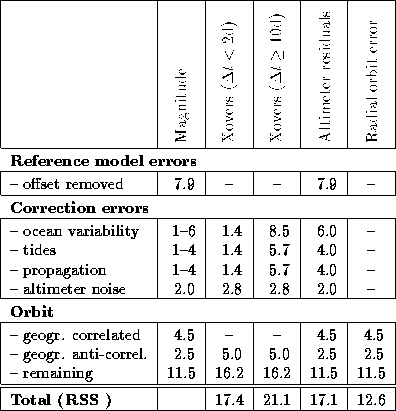


Next: Conclusions Up: ERS-1 Operational Orbit Determination Previous: Orbital differences
Estimating the Radial Orbit Error
In the previous Sections, various components of the radial orbit error were found and their magnitude estimated. However, as was discussed in a previous Section, the geographically correlated orbit error can not be resolved from any of the analyses presented above. A reasonable estimate for geographically correlated orbit error (or at least the gravity-induced part of it) can be obtained analytically with the formulation by Rosborough [Rosborough, 1986], simulating the gravity model errors by a difference between two `state-of-the-art' gravity models or their estimated errors. By this means a geographically correlated error of about 4.5 cm RMS and an anti-correlated error of about 2.5 cm RMS are found for an ERS-1 type orbit [Scharroo et al., 1993c]. Both errors show up in the altimeter height residuals while only the latter part contributes to the crossover height differences.
 Table 4: Compilation of the values (in cm) leading to the short-term
and long-term crossover RMS, the altimeter height residual RMS, and
the radial orbit error estimate.
Table 4: Compilation of the values (in cm) leading to the short-term
and long-term crossover RMS, the altimeter height residual RMS, and
the radial orbit error estimate.
This almost covers all values printed in Table 4. From the short-period and long-period crossover RMS a remaining 16.2 cm RMS completes both columns, indicating another 11.5 cm contribution to the radial orbit error and the altimeter height residuals. This leads to an additional 7.9 cm MSS93A model error after removal of the origin offset. The RSS total radial orbit error of the DUT operational JGM-2 orbits finally amounts to 12.6 cm, completely in accordance with previous estimates.
In the same way the radial orbit accuracy of the D-PAF PRC-01 orbits can be estimated at 13.6 cm.



Next: Conclusions Up: ERS-1 Operational Orbit Determination Previous: Orbital differences